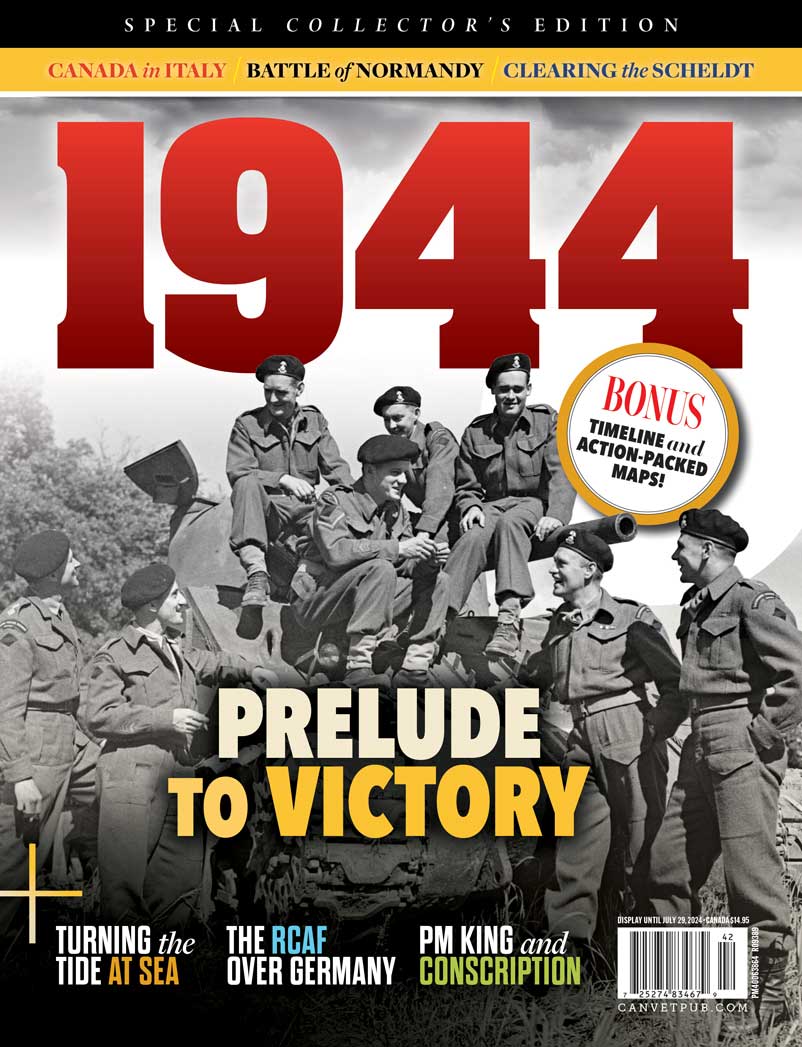
The year 1944 begins well for the Allies after German defeats in Stalingrad, North Africa and Sicily. Italy has been invaded and dictator Benito Mussolini deposed. The bomber offensive is wreaking destruction across Germany and occupied Europe. Allied fortunes in the Atlantic have shifted. And in the Pacific, the American island-hopping campaign is inching toward Japan. The war is far from over, but the Axis is clearly losing at last. It is time to strike what will prove to be the decisive blow in Europe.
One certainty prevails: the Axis is still a formidable opponent and the casualties required to defeat Nazi Germany and Hirohito’s Japan are certain to be heavy. The bloodshed isn’t complete, and Canadians, fighting in Italy and soon to be landing in France, face a difficult military and, with conscription, political year.
With better training, upgraded ships and the latest radar and weaponry, the Royal Canadian Navy has greatly improved its performance at sea. The U-boat advantage is curtailed, and Canada’s role is crucial—40 per cent of the support groups hunting the enemy are RCN and the whole convoy system is under Canadian escort.
With Ortona behind them, Canadian troops take a major role in the Allied offensive that aims to capture Rome by moving up the Liri Valley to crack the Gustav and Hitler defensive lines just south of the ancient city. The fighting is fierce, the logistics difficult, and the costs high, but Rome falls on June 4.
High casualty rates and low morale plague the RCAF through 1943, but with a tough new command appointment in February 1944, things start looking up. Loss rates drop sharply in the spring when raids shift their focus from Germany to France in preparation for the impending Normandy invasion.
Canada is assigned one of the five D-Day invasion areas, code-named Juno. The army’s one parachute battalion, grouped with the British airborne, is to be dropped on the left flank while the RCN sweeps the Channel for mines and Canadian aircrews join bombing raids inland. The liberation of Europe begins.
The Germans are in full retreat, the Allies in hot pursuit. The First Canadian Army is to free the Channel ports. A British-American attempt to end the war early in the Netherlands fails; liberation of the Scheldt estuary is now critically important. The task falls to the Canadian army. Back home, the conscription debate heats up.
By year’s end, the war is well in hand. The fighting of 1944 concludes as it had begun, with death and destruction. There will be more before the European war comes to a close with Allied victory over Nazi Germany in May 1945. The Pacific war will continue until the atomic bombings of Nagasaki and Hiroshima in August.